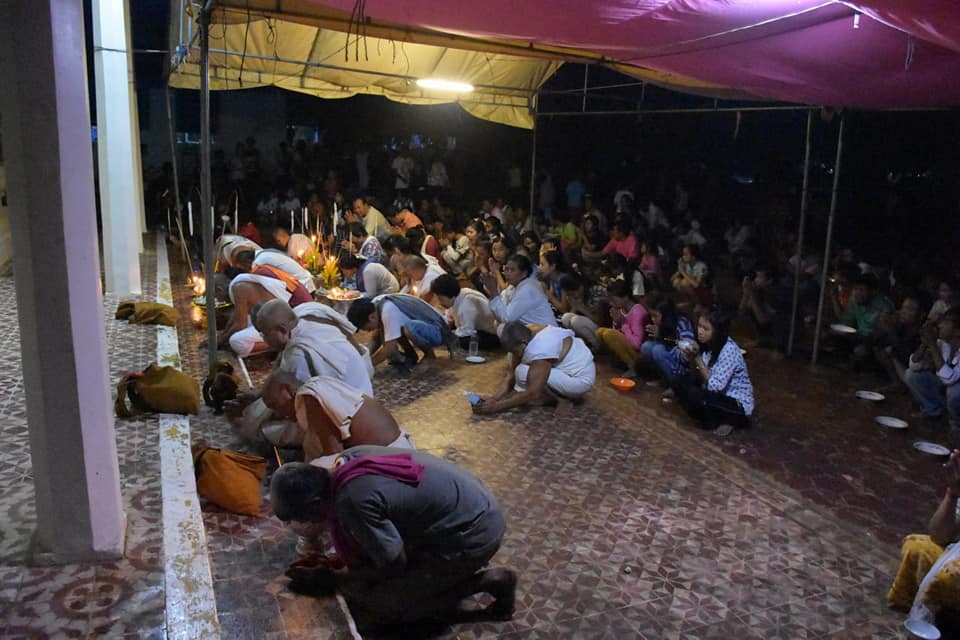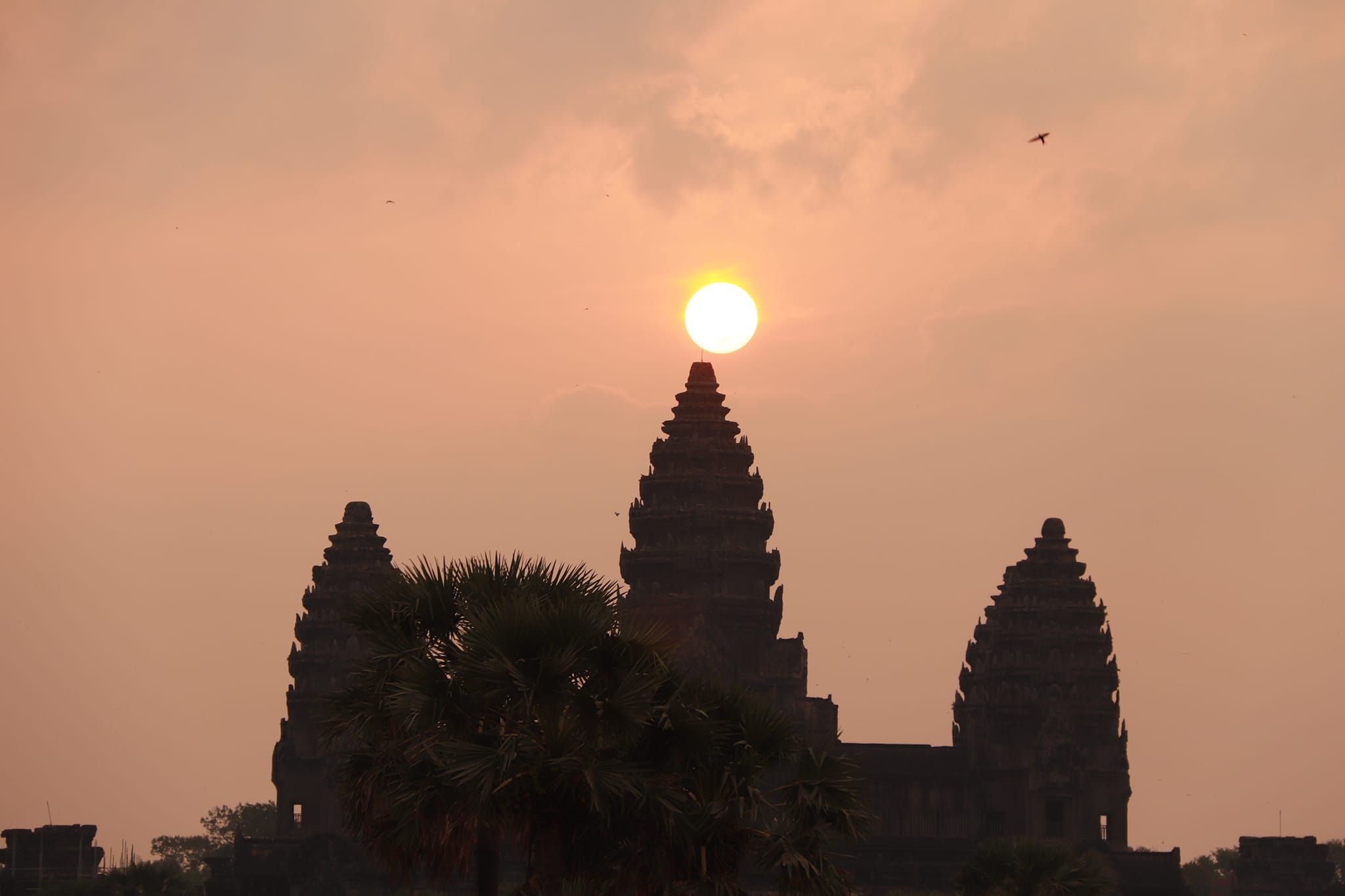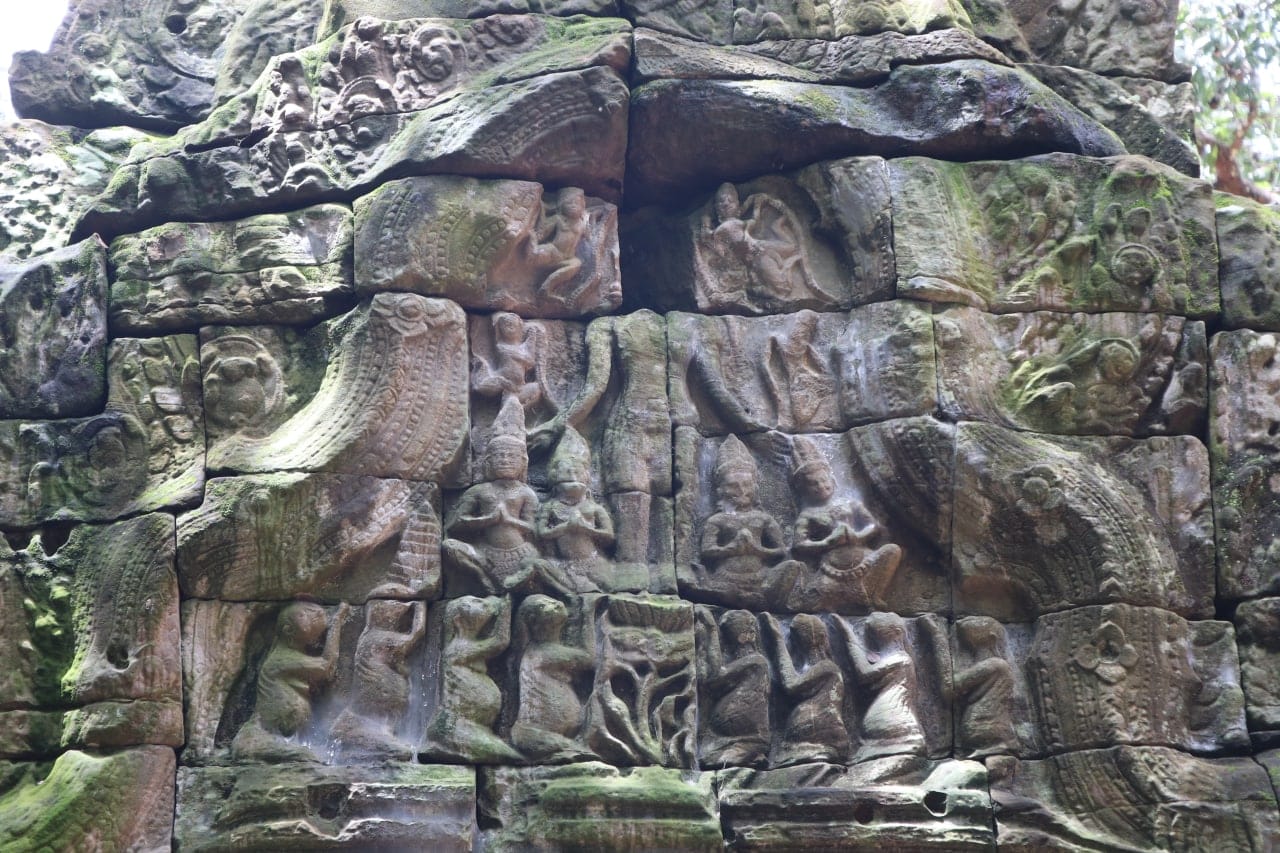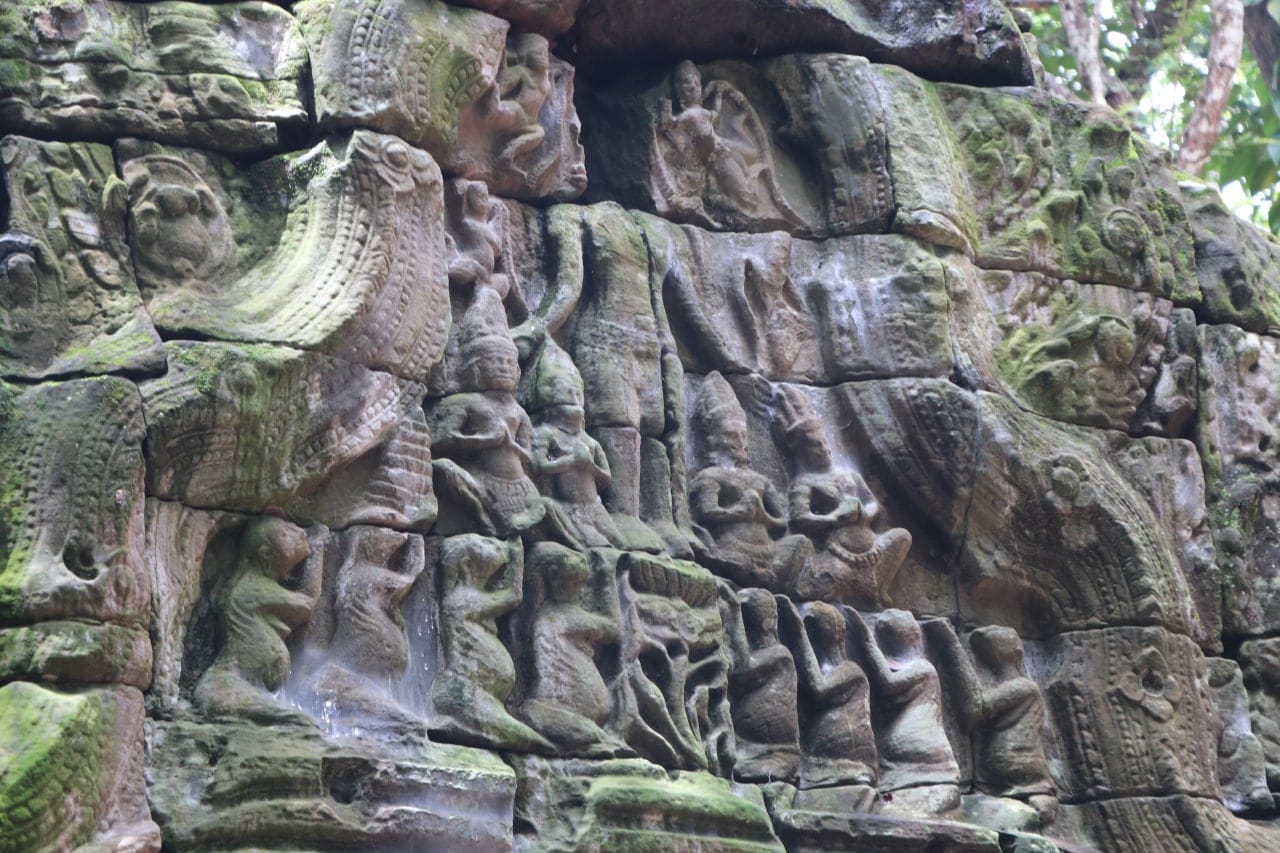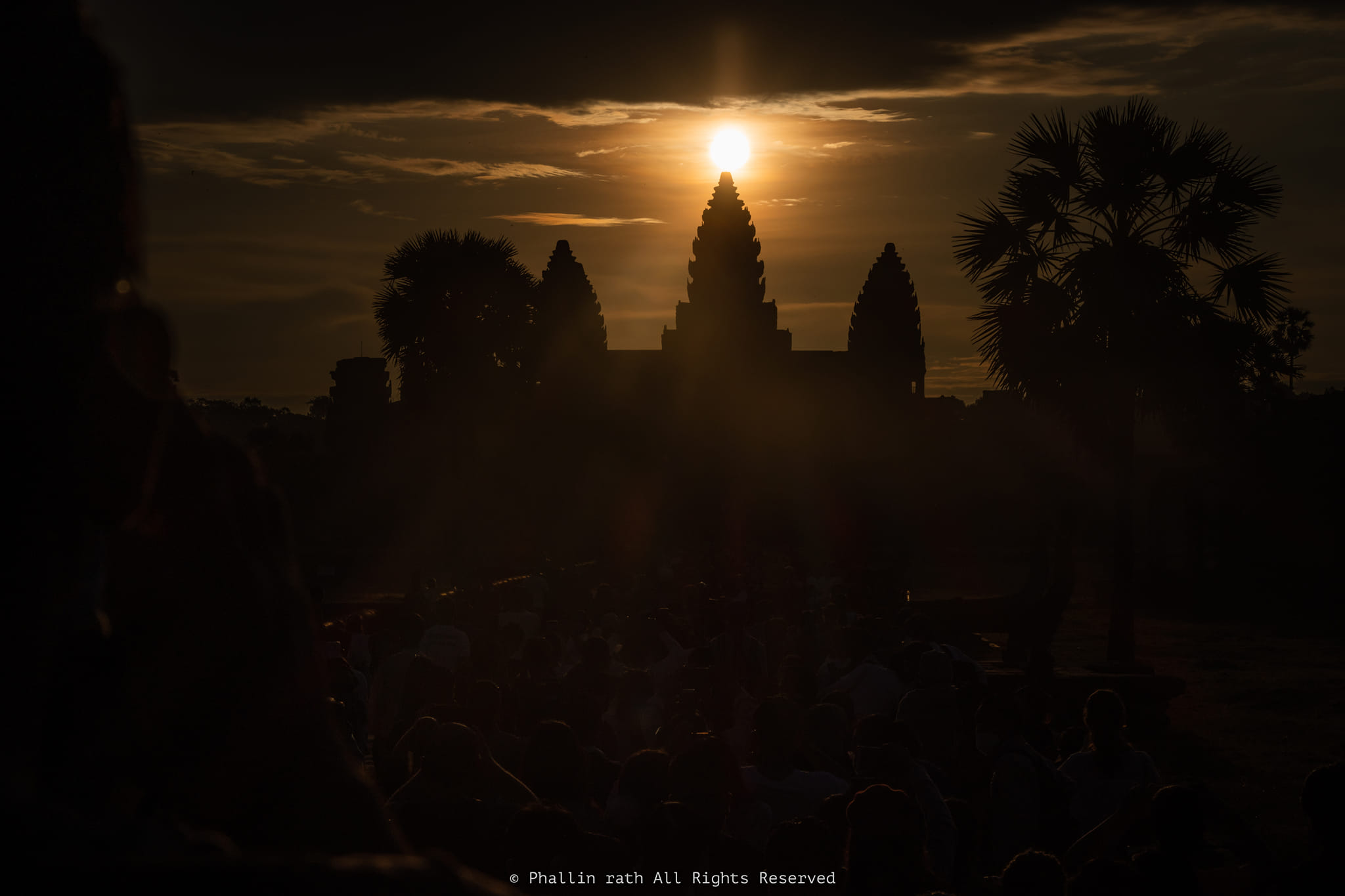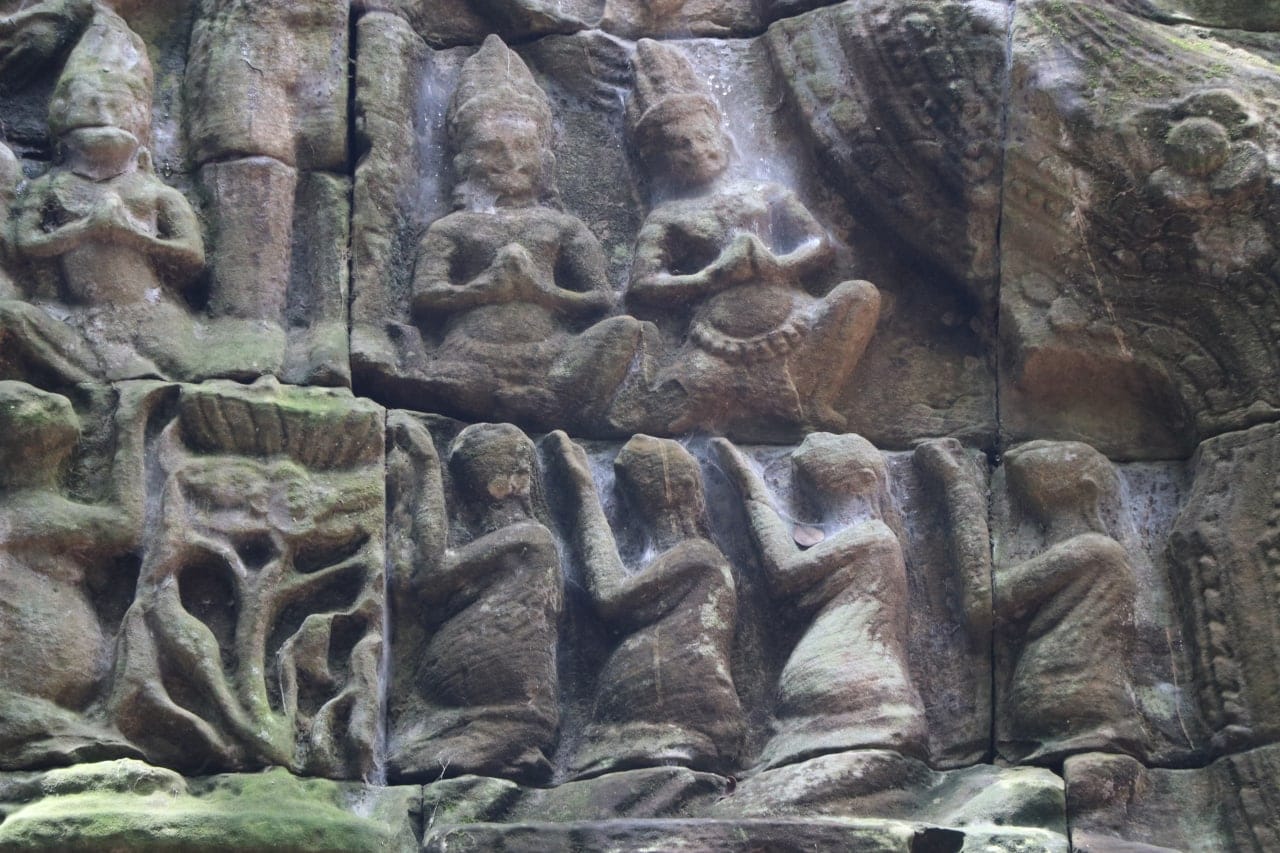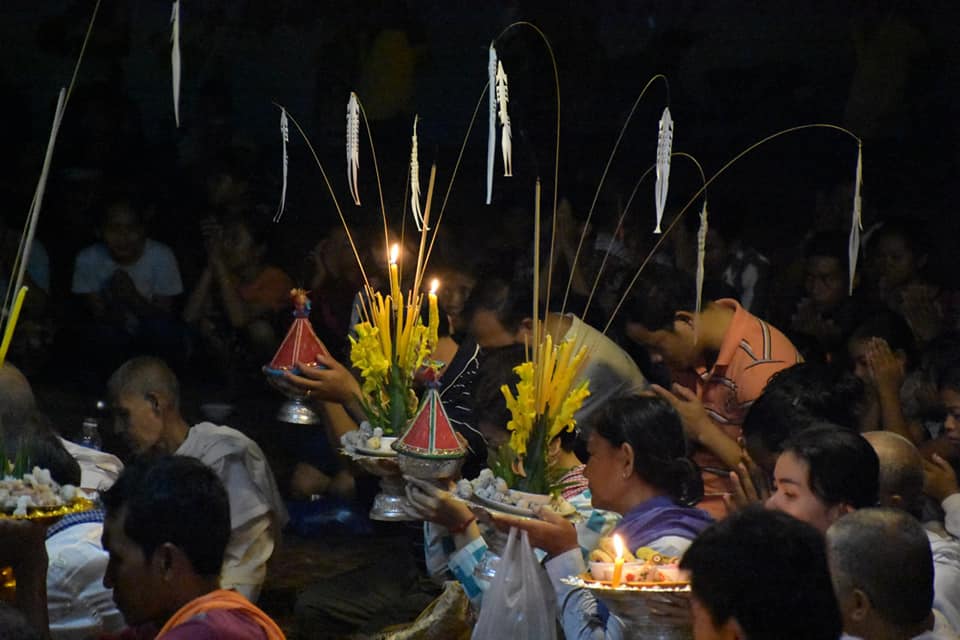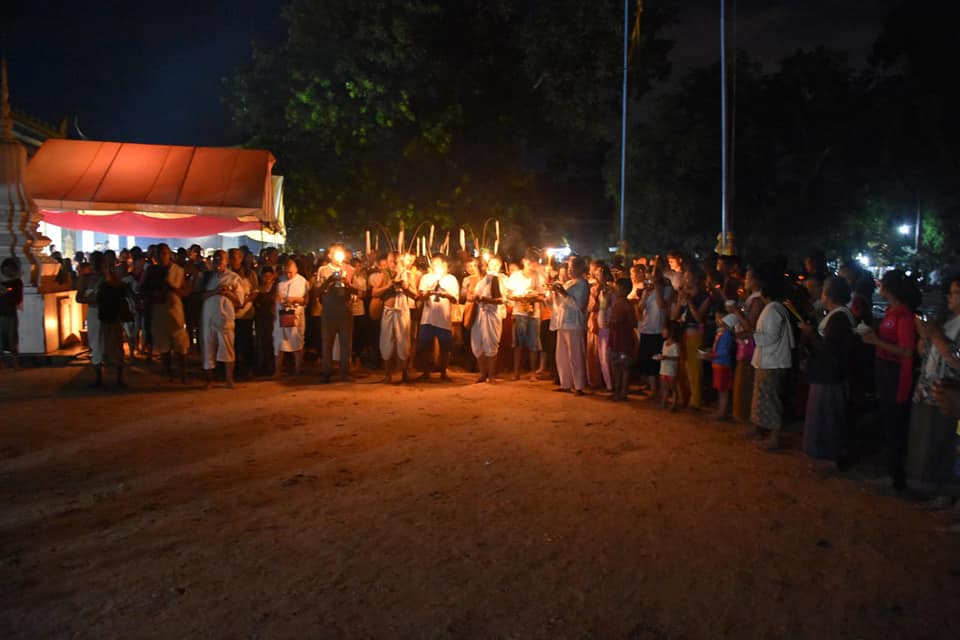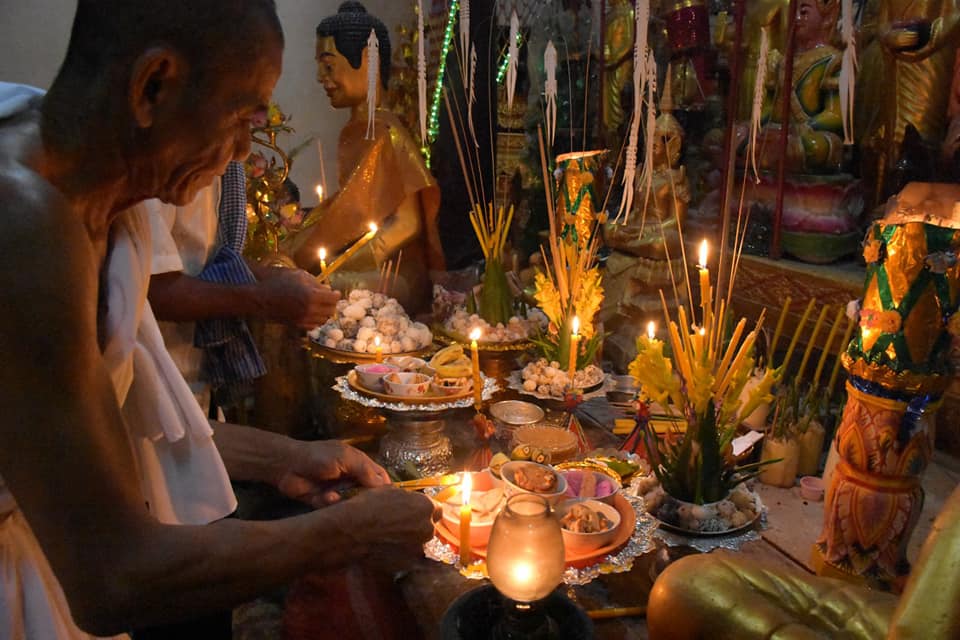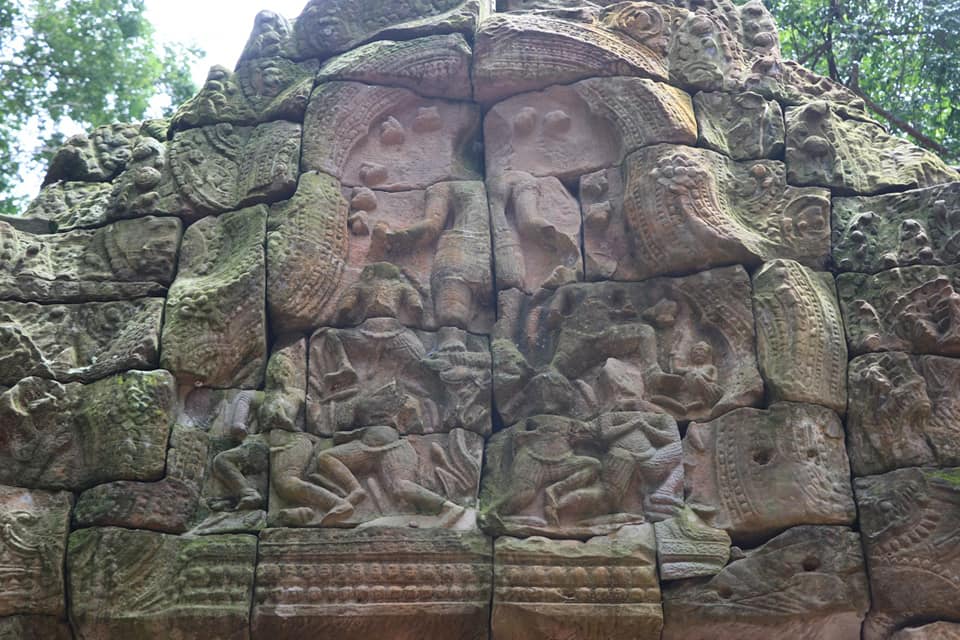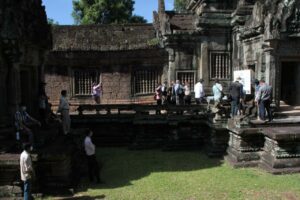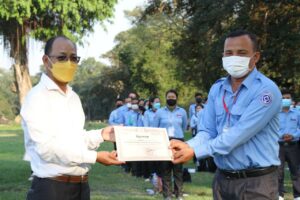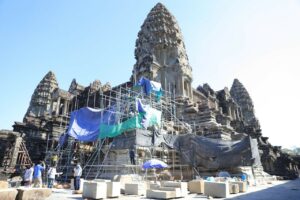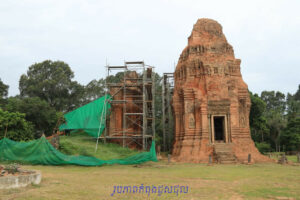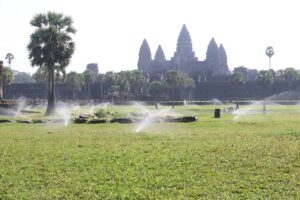Is throwing bai ben an important ceremony? When can Cambodians do this?
Bai ben (ben rice) is widely known as a preparation for throwing to evil spirits. How long have we known the evil spirits? At the present, we only know the evil spirits from paintings in pagodas and on the walls of Buddhist temples. But Khmer cultural researcher at the APSARA National Authority, Ang Choulean, found evil spirit carvings at Ta Nei temple in the Angkor site, perhaps the only one in Khmer art. Im Sokrithy, an archaeologist and director of the Department of Research, Training, and Communication points out that according to the Kanradavyuha Mahayana Buddhist scriptures written in Kashmir, India, during the 5th century AD. The story of Avalokitesvara, worshiped by King Jayavarman VII during his reign at the end of the 12th century, reveals the story of Avalokitesvara helping the evil spirits.
More than 900 years ago, the former Khmer king Jayavarman VII likely practiced the Kanradavyuha Mahayana Buddhist scriptures during the late 12th and early 13th centuries AD to save the dead in a bloody battle. One was to liberate the capital of Angkor from the Champa army. As a result of the war, many people were killed, including his family, suffering, homelessness, and the loss of his family and army. He believed that some of his relatives, officials, people, and soldiers had died and did not know where the spirits had gone, or that some of them might have been reborn as the evil spirits and suffered in hell. Only the Avalokitesvara, according to Karandavyuha tradition, has the power and ability to save these evil spirits from suffering and to be reborn as human beings.
The story and evidence of these evil spirits are engraved on the stone carvings of the eastern gate of Ta Nei temple in Siem Reap province, left to the present day. In addition, in the belief of the Brahmins, to save the ghosts from being reborn as humans, there was a ritual of throwing bai ben, which the Khmer ancestors always performed until it became their tradition to this day. Mr. Im Sokrithy said that according to the inscription ID number K279 is about a Hindu festival, which in Sanskrit is called “Srathea” which is a ceremony to throw bai ben to save the souls of the dead to be reborn as human beings.
Throwing bai ben is not meant to throw food for the hungry evil spirits to fill their stomachs. It is made from 19 balls of sticky rice, representing the body that allows the souls of the dead who are born as evil spirits to come and capture the body and be reborn as human beings. According to Khmer tradition, everyone has two main elements: the soul and the body. When a human being dies, the body is gone but the soul remains. For this reason, it is believed that for the dead to be reborn as human beings, the soul and body must be reunited. That is why Khmer ancestors celebrated the throwing of bai ben during the Pchum Ben festival.
Is throwing the bai ben ceremony only possible during Pchum Ben or at other times? Archaeologists who research ancient inscriptions found that the throwing bai ben ceremony to save the souls of the dead to be reborn as human beings is not only hold during Pchum Ben. This ceremony can be done four times a year, during Pchum Ben, when day and night are everywhere on earth of approximately equal length (equinox) occurs twice a year when the night lasts longer than day occurs once a year, And when the day lasts longer than night occurs once a year.
In India, according to the Hindu religion, the throwing of bai ben to save the souls of the dead to be reborn as human beings is done only in small families. But this tradition was used by the ancient Khmer kings as a large and comprehensive form of Khmer rituals for many generations of relatives, blood relatives, the elderly, the young, and the homeless, especially to thank all the patriots who died in the war to defend the country also received this dedication, and later the ceremony became a major festival until it became the largest national festival and tradition.
Article: Yi Sotha
Photos: Yi Sotha, Ou Kongkea, Hum Rithy, Rath Phallin


